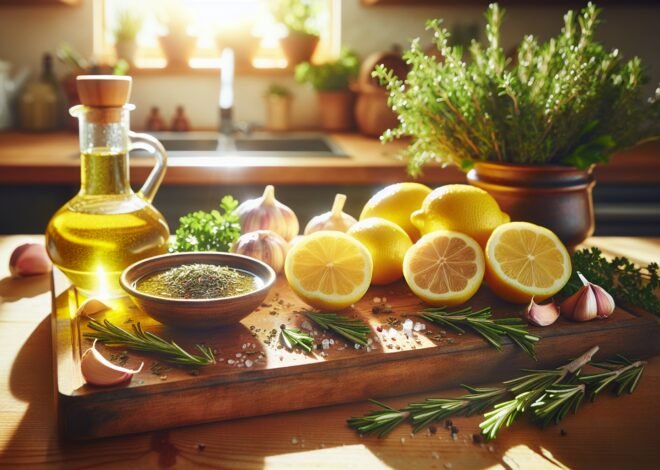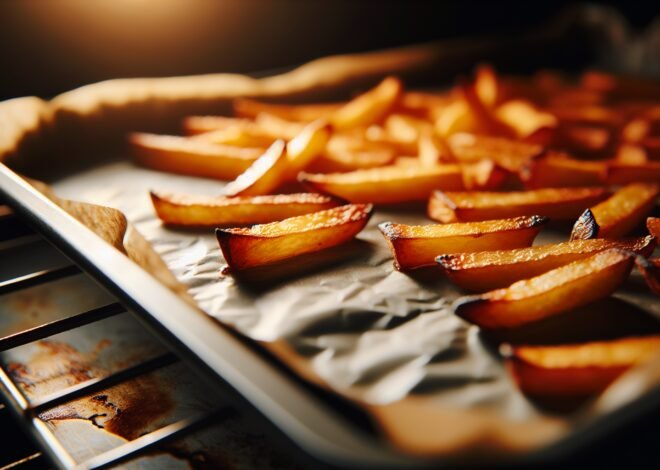
How to Prep Vegetables for a Chopped Salad: Tips for Efficiency
Prepping vegetables for chopped salad can transform an ordinary dish into a vibrant, textural delight. Did you know that the way vegetables are sliced affects the balance and flavor of your salad? This guide will cover efficient techniques for chopping vegetables to improve your salad-making skills. From selecting the freshest produce to mastering knife skills, we’ll provide tips on maintaining speed without sacrificing precision. Dive in and discover how to create beautifully uniform salad ingredients, turning every meal into a visual and flavorful masterpiece.
Best Techniques to Prep Vegetables for a Chopped Salad
Preparing vegetables for a chopped salad is an art that combines precision with creativity. Achieving the perfect chop involves using the right tools, understanding proper washing techniques, and mastering the art of uniform cutting. Let’s dive into the essentials for creating a delicious and visually appealing chopped salad.
Essential Tools and Equipment for Efficient Vegetable Prep
Having the right tools can transform your salad-making experience. A quality chef’s knife is essential. Its sharp blade ensures clean cuts and reduces bruising. Pair it with a sturdy cutting board, preferably made of wood or bamboo, to protect your knife’s edge.
Consider investing in a mandoline for consistent slices. This tool offers precision and ease, especially when slicing vegetables like cucumbers and radishes. A peeler is vital for removing skins from carrots or cucumbers, ensuring a smooth texture.
A salad spinner is indispensable. It effectively dries greens after washing, preventing soggy salads. When your greens are dry, they better absorb dressings, enhancing flavor. A set of nesting bowls allows for easy organization and storage of prepped ingredients, keeping your workspace tidy.
Proven Methods to Wash and Sanitize Fresh Produce
Washing vegetables correctly is crucial for safety and taste. Start by rinsing them under cool, running water. Use your hands to gently rub the surface, removing dirt and debris. For firmer vegetables like potatoes or carrots, a vegetable brush can help remove stubborn dirt.
Soaking leafy greens in a bowl of water with a splash of vinegar or lemon juice can help kill bacteria. Let them sit for a few minutes before spinning them dry. This method is especially effective for greens like spinach or kale, which may harbor more dirt.
For added safety, consider using a produce wash. These solutions are designed to sanitize without leaving harmful residues. After washing, dry all vegetables thoroughly to prevent excess moisture in your salad, which can cause wilting.
Step-by-Step Guide for Uniform Vegetable Chopping
Uniform chopping ensures even cooking and a visually appealing dish. Start by trimming ends and peeling if necessary. For uniformity, cut vegetables into manageable pieces before further chopping.
Begin with greens. Roll leafy greens into a tight bundle and slice into thin ribbons. This technique, known as chiffonade, works well for spinach or basil.
For root vegetables like carrots or beets, first cut them into sections, then slice each section into thin planks. Stack the planks, then cut them into even sticks, known as julienne. Finally, dice the sticks into small, uniform cubes.
When chopping softer vegetables like tomatoes, a serrated knife can provide cleaner cuts without crushing. Keep slices consistent in thickness to ensure even mixing and flavor distribution.
Quick Tips for Maintaining Freshness in Chopped Salads
Keeping your chopped salad fresh involves more than just choosing the right vegetables. Proper storage and handling techniques can significantly extend the life of your salad ingredients. Here are some expert tips to ensure your salad stays crisp and vibrant.
How to Store Chopped Vegetables for Maximum Freshness
Storing chopped vegetables properly is key to preserving their freshness. Start by ensuring they are completely dry before storage. Excess moisture can lead to spoilage.
Use airtight containers to minimize exposure to air, which accelerates wilting. Line containers with a paper towel to absorb any remaining moisture and keep vegetables crisp.
For leafy greens, consider a salad spinner with a built-in storage bowl. This allows for easy drying and storage in one step. Store denser vegetables, like carrots and peppers, separately from delicate greens to prevent crushing.
Effective Ways to Prevent Vegetables from Browning
Browning can occur when vegetables are exposed to air after cutting. To combat this, use acidic solutions. Toss cut vegetables with a splash of lemon juice or vinegar to slow oxidation. This method works well for avocados, apples, or pears, which are prone to browning.
Storing cut vegetables in an airtight container also helps. The reduced air exposure limits the chance of browning, particularly for potatoes and eggplants.
Using antioxidants can further protect against browning. Vitamin C powder, available at health stores, can be dissolved in water and used as a rinse for susceptible vegetables.
The Role of Airtight Containers in Preserving Salad Ingredients
Airtight containers play a crucial role in maintaining the quality of salad ingredients. They prevent moisture loss and limit exposure to oxygen, both of which can lead to spoilage.
Choose containers with a reliable seal to ensure maximum freshness. Glass containers are ideal as they don’t retain odors and are easy to clean. Stackable options can help save space in your refrigerator.
For best results, avoid overcrowding containers. Overpacking can lead to bruising and uneven air circulation, accelerating spoilage. Leave some space in the container to allow for airflow and preserve the crispness of your ingredients.
Choosing the Right Vegetables for a Balanced Chopped Salad
Creating a balanced chopped salad involves selecting vegetables that offer a variety of textures, flavors, and nutrients. By choosing the right mix of greens, vibrant veggies, and seasonal produce, you can craft a salad that is both nutritious and delicious.
Nutritious Greens to Include in Your Chopped Salad
Greens form the foundation of any great salad. Opt for a mix of textures and flavors. Spinach offers tender leaves and a mild taste, packed with iron and vitamins. Kale provides a hearty texture and a nutritional boost, being rich in antioxidants.
Consider adding arugula for a peppery flavor that adds depth. It pairs well with sweet or citrusy dressings. Romaine lettuce brings a crisp crunch and is an excellent source of vitamin A.
Mixing different greens not only enhances taste but also boosts nutritional value. Aim for a blend of dark leafy greens, which are nutrient-dense and contribute to a well-rounded, healthy salad.
Vibrant Veggies That Add Flavor and Color
Adding colorful vegetables can elevate the visual appeal and flavor profile of your salad. Bell peppers come in various hues and offer a sweet crunch. Tomatoes, with their juicy texture and bright taste, complement most greens.
Include carrots for a splash of orange and a natural sweetness. Red onions add sharpness and a vibrant color contrast. For a unique flavor, add radishes. They provide a peppery punch and a refreshing crunch.
Consider using purple cabbage for a bold color and additional texture. These vibrant veggies not only make your salad more appealing but also provide a range of vitamins and antioxidants.
Using Seasonal Produce for Enhanced Salad Variety
Incorporating seasonal produce into your salad can enhance its flavor and nutritional value. Seasonal vegetables are often fresher and more affordable. In spring, include asparagus and peas for a fresh taste. Summer brings a bounty of tomatoes and cucumbers, perfect for a refreshing salad.
Autumn offers root vegetables like beets and carrots, which add earthiness and sweetness. In winter, opt for hearty greens like kale and Brussels sprouts, which stand up well to robust dressings.
Using seasonal produce ensures you enjoy vegetables at their peak ripeness, offering the best flavor and nutritional benefits. This approach not only diversifies your salad but also supports local agriculture.
Conclusion
Prepping vegetables for a chopped salad involves selecting fresh, crisp produce. Start by thoroughly washing all vegetables under cold water to remove dirt and pesticides. Chop vegetables into uniform, bite-sized pieces for even distribution and texture. Use a sharp knife or a food processor for quicker and more precise chopping. Store prepped vegetables in airtight containers in the refrigerator until ready to assemble the salad.
FAQ
What are the best techniques for chopping vegetables for a salad?
Chopping techniques vary depending on the vegetable type. For leafy greens, use a chiffonade method. Dice firm veggies like carrots and celery into uniform pieces for even flavor distribution. Slicing cucumbers and tomatoes thinly enhances their taste in a salad.
How do you keep chopped salad vegetables fresh for longer?
Store chopped vegetables in airtight containers. Adding a paper towel can absorb excess moisture, keeping them crisp. Refrigerate promptly to preserve freshness, as most veggies do well in a cool environment.
What tools and kitchen gadgets are recommended for prepping vegetables for a salad?
A sharp chef’s knife is essential for precision. A mandoline slicer offers uniform slices quickly. Salad spinners help dry leafy greens, preventing sogginess. For faster prep, consider a food processor with slicing attachments.
How can you chop vegetables quickly and efficiently for a salad?
Organize your workspace and gather all necessary tools. Use efficient chopping techniques like rocking the knife for a faster cut. Group similar vegetables together, cutting them in batches to save time.
What are the most common mistakes to avoid when chopping vegetables for a salad?
Avoid using a dull knife as it can bruise vegetables. Don’t overcrowd the chopping board; it slows down the process and increases the risk of injury. Cutting unevenly affects the salad’s texture and flavor balance.
How do different chopping methods affect the texture and flavor of vegetables in a salad?
Finely chopped vegetables blend flavors more harmoniously, while larger cuts offer distinct tastes and textures. Thin slices enhance a vegetable’s natural taste. Experimenting with different cuts can elevate the overall salad experience.











